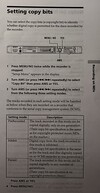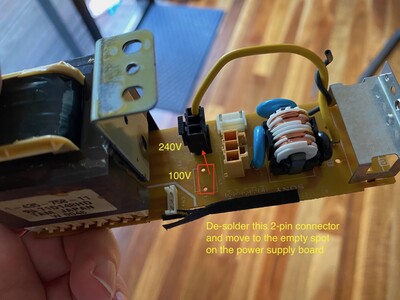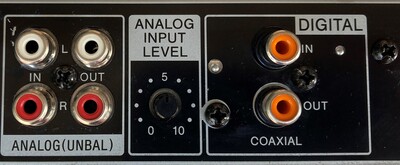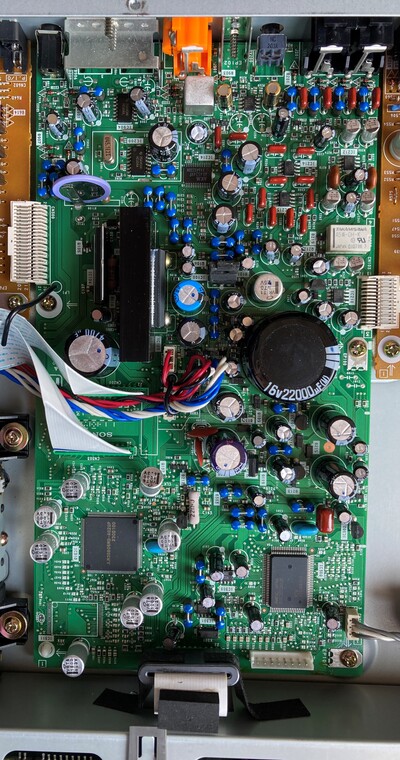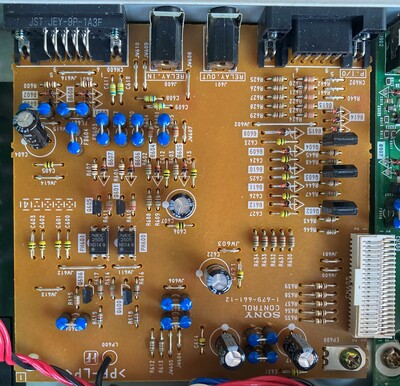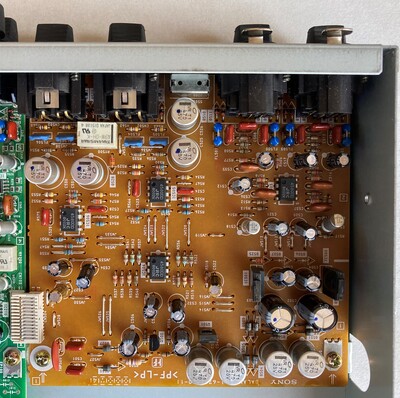Table of Contents
Sony MDS-E12
| Name | MDS-E12 |
|---|---|
| Manufacturer | Sony |
| Released | 2000/10 |
| Device type | pro |
| Recorder | Recorder |
| MDLP | Yes |
| NetMD | No |
| Hi-MD | No |
| Radio | No |
| Dimensions | 482w x 44h x 290d mm |
| Weight | 3.5kg |
| ATRAC ver | Type-R |
| Battery | |
| Battery notes | |
| Sidecar (depr) | No |
| Voltage | 100, 230 |
| Power cable | AC |
| Price (launch) | |
| ¥90 000 | |
| - | |
| Inputs | RCA in, XLR in, Digital coaxial |
| Outputs | 1/4 inch headphone, RCA out, XLR out, Digital coaxial |
| Control | PS/2 keyboard, RS-232 serial, 3.5mm control |
As MDS-E10, minus optical TOSLINK, plus XLR balanced analogue, plus parallel and RS-232 serial control, plus real-time clock. Supports Scale Factor Edit.
1U Rack mountable MD recorder. MDLP support, PC Keyboard Support and comes with a wired remote. CTRL-S input.
The printing on the display window is in gold (white on the MDS-E10).
Content adapted from: MDS-E12 Minidisc.org Page, Sony Product Page (archived)
Manuals
RS232
Some notes on SCMS support
All MDS-E12 and MDS-E10 machines (see Note) ignore SCMS on digital inputs - i.e. you can record any digital source (Coax or TOSLINK S/PDIF) with any Copyright/Original SCMS state. If your machine starts up with the splash screen “MDS-E12” or “MDS-E10” then the Copyright/Original bits recorded will be the same as the source. If your machine starts up with “MDS-E12 PRO” or “MDS-E10 PRO” then the Setup menu contains a new item “Copy Bit” which allows you to set the Copyright/Original bits on the recorded track to either “Permit”, “Inhibit” or “PreRecorded”. Permit means the track can be copied digitally unrestricted, even using consumer decks. Inhibit means that consumer decks can't digitally copy the track and PreRecorded means that one generation of digital copy is allowed by consumer decks.
In “Monitor” mode the SCMS bits output on a digital interface will be the same as the SCMS bits on the input. i.e. these machines don't operate as “Copy Bit Killers” on pass-through. One such device that can do this is the Behringer SRC2496 (although this is now a discontinued product). Other products such as Focusrite USB interfaces and some PC soundcards can also strip SCMS.
Note: Some early machines, or machines from some regions may require an internal resistor modification to allow SCMS to be ignored. See the Service Manual Supplement-1 listed for the MDS-E12/MDS-E10 - a Serial Number range is given where the mod is required. This resistor mod does not make the machine “PRO” and the Copy Bit option will NOT appear in the Setup menu - this comes with newer firmware in the machine. The only sure way to tell if a machine is “PRO” is from the startup splash screen. If you can see inside, early machines tend to use Nichicon “Fine Gold” capacitors in their analogue sections. This usage seems to have stopped in the later machines which tend to be “PRO”.
Some notes on AC input voltage
The Japan version of this unit is marked as 100VAC input only, however it seems that the AC board isn't very different between the Japan and other versions. Converting the unit to run on 120VAC is as simple as moving the yellow wire to the (UC2) solder point, 240VAC is the (CN2) solder point.
This modification is supported by pages 77 and 81 of the Service Manual.
In the service manual linked above, the connector on the AC Board for 100V is CN3 and the AC input is connected to pin 2. For 240V, if CN6 is not populated, then the connector CN3 is moved to CN6 and the AC input is connected again to pin 2.
Repair
Drive: MDM7SC (Type-R, CXD2662R)
Eject belt: 17mm dia x 0.8mm square section (53mm circumference). e.g. Linx Audio (eBay)
Firmware Bugs
Parallel port: If you have the “non-PRO” MDS-E12 (splash screen says “MDS-E12”) then the Setup menu Parallel port behaviour for the REC and STOP settings are transposed. If you want the parallel input to be “STOP” then the menu item needs to be set to “REC”. Conversely if you want the parallel input to be “REC” then the menu item needs to be set to “STOP”. If you use the Parallel→Preset setting, then input 2 is REC (not STOP as labelled) and input 3 is STOP (not REC as labelled). This bug is fixed on the “MDS-E12 PRO”.
The upshot of this, is if you are using the parallel interface and using the preset settings you will get the same transport behaviour from both versions of the E12, namely input 2 performs REC and input 3 performs STOP.
Photos
Submit your own! Edit the page or Contact Us.

